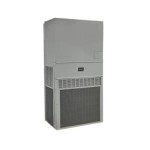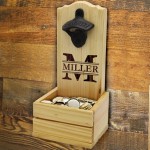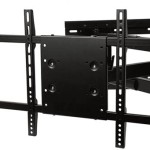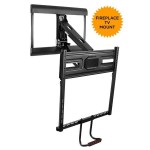Modern Coat Hooks: Wall Mounted Solutions for Style and Functionality
Wall-mounted coat hooks provide a practical and aesthetically pleasing solution for organizing outerwear, bags, and other accessories. Modern designs have moved beyond simple utility, incorporating stylish materials, innovative forms, and space-saving features. These hooks are increasingly popular in entryways, hallways, bedrooms, and even bathrooms, offering a customizable and efficient way to manage clutter and enhance interior décor.
The appeal of modern coat hooks lies in their versatility. They can be selected to complement any design aesthetic, from minimalist and industrial to rustic and bohemian. Furthermore, their wall-mounted nature frees up valuable floor space, making them ideal for smaller homes, apartments, and offices. The installation process is typically straightforward, requiring basic tools and minimal effort, allowing homeowners and renters to quickly transform their spaces.
This article will explore various aspects of modern coat hooks, focusing on their key features, design considerations, material choices, and installation techniques. It will serve as a comprehensive guide for individuals seeking to enhance their homes with these functional and stylish accessories.
Key Considerations When Choosing Modern Coat Hooks
Selecting the right coat hooks requires careful consideration of several factors. These include the intended use, the available space, the desired aesthetic, and the weight-bearing capacity of the hooks. A well-thought-out selection process ensures that the chosen coat hooks not only meet the functional needs but also seamlessly integrate into the existing interior design.
First, assess the intended use. Determine what items will be hung on the hooks. If primarily coats and jackets, consider hooks with a deeper projection to accommodate the bulk of the garments. For lighter items like scarves, hats, or bags, smaller, more discreet hooks may suffice. In a family home, allocating a specific number of hooks per person can help maintain order and prevent overcrowding.
Secondly, analyze the available space. Measure the wall area where the hooks will be installed to ensure they fit comfortably without overwhelming the space. Consider the height at which the hooks should be mounted, taking into account the height of the users and the length of the items to be hung. In narrow hallways, opt for hooks with a low profile to minimize the risk of bumping into them.
Thirdly, consider the aesthetic. Modern coat hooks come in a wide range of designs, from sleek and minimalist to ornate and decorative. Choose hooks that complement the overall style of the room. If the room has a contemporary design, opt for hooks made of stainless steel or brushed nickel with clean lines. For a more rustic aesthetic, consider hooks made of wrought iron or reclaimed wood. The finish of the hooks should also coordinate with other hardware in the room, such as door handles and light fixtures.
Finally, evaluate the weight-bearing capacity. Check the manufacturer's specifications to ensure the hooks can support the weight of the intended items. Overloading the hooks can lead to damage or even detachment from the wall. For heavy items, consider using hooks with multiple mounting points for added stability. It is also crucial to use appropriate wall anchors to ensure the hooks are securely fastened to the wall, especially when mounting on drywall.
Materials and Finishes: Options for Modern Coat Hooks
The choice of materials and finishes significantly impacts the aesthetic appeal and durability of modern coat hooks. Common materials include metal, wood, plastic, and composite materials, each offering unique characteristics and advantages. Selecting the right material and finish ensures that the hooks not only look great but also withstand daily wear and tear.
Metal coat hooks are a popular choice due to their strength, durability, and versatility. Stainless steel hooks are resistant to corrosion and rust, making them ideal for bathrooms and other humid environments. Brushed nickel hooks offer a softer, warmer look than stainless steel, while chrome hooks provide a polished, contemporary appearance. Wrought iron hooks are a classic choice for rustic and industrial designs, offering a sturdy and timeless appeal. Brass hooks, available in polished or antique finishes, add a touch of elegance and sophistication to any space.
Wooden coat hooks offer a natural and warm aesthetic. Hardwoods like oak, maple, and walnut are durable and resistant to wear and tear. Painted wood hooks can be customized to match any color scheme, making them a versatile choice for various design styles. Reclaimed wood hooks offer a unique, rustic charm, adding character and history to the space. The finish of the wood should be carefully considered to protect it from moisture and scratches. A clear coat of varnish or polyurethane can enhance the wood's natural beauty and provide a durable protective layer.
Plastic coat hooks are a budget-friendly option that comes in a wide range of colors and designs. While they may not be as durable as metal or wood hooks, they are lightweight and easy to clean. Plastic hooks are often used in children's rooms or playrooms due to their affordability and playful appearance. High-impact plastic hooks are more durable and can withstand heavier loads. When selecting plastic hooks, ensure they are made of high-quality materials that are resistant to cracking or fading.
Composite materials, such as engineered wood and resin, offer a balance of durability and affordability. These materials can be molded into various shapes and designs, providing a wide range of aesthetic options. Composite coat hooks are often used in modern and contemporary designs, offering a sleek and minimalist appearance. They are also resistant to moisture and warping, making them suitable for bathrooms and other humid environments. The finish of composite hooks can range from matte to high-gloss, allowing for customization to match any décor.
Installation Techniques and Considerations
Proper installation is crucial to ensure the stability and longevity of wall-mounted coat hooks. The installation process typically involves marking the desired location, drilling pilot holes, and securing the hooks to the wall using screws and anchors. Choosing the right tools and techniques is essential for a successful installation.
Before beginning the installation, gather the necessary tools and materials. These typically include a measuring tape, a level, a pencil, a drill, a screwdriver, screws, wall anchors, and safety glasses. It is also helpful to have a stud finder to locate wall studs, which provide the strongest mounting points. Wall anchors are necessary when mounting hooks on drywall or plaster, as they provide additional support and prevent the screws from pulling out of the wall.
First, measure and mark the desired location of the hooks on the wall. Use a level to ensure the hooks are aligned horizontally. Consider the spacing between the hooks to ensure they are evenly distributed and accommodate the items to be hung. Use a pencil to mark the location of the screw holes.
Next, drill pilot holes at the marked locations. The size of the pilot holes should be slightly smaller than the diameter of the screws. When drilling on drywall or plaster, use a drill bit designed for these materials. Be careful not to drill too deep, as this can damage the wall. If possible, drill into a wall stud for maximum stability. Use a stud finder to locate the studs and mark their locations.
If mounting the hooks on drywall or plaster without a stud, insert wall anchors into the pilot holes. There are various types of wall anchors available, including plastic anchors, metal anchors, and toggle bolts. Choose the appropriate type of anchor based on the weight-bearing capacity required. Follow the manufacturer's instructions for installing the wall anchors. Once the anchors are in place, align the coat hooks with the pilot holes and secure them to the wall using screws. Tighten the screws until the hooks are firmly attached to the wall, but avoid over-tightening, as this can damage the wall or the hooks.
Finally, test the stability of the installed hooks by applying a small amount of pressure. If the hooks feel loose or wobbly, tighten the screws or replace the wall anchors with stronger ones. Once the hooks are securely installed, they are ready to use. Remember to periodically check the stability of the hooks and tighten the screws as needed to ensure they remain securely attached to the wall.
Beyond practical function, modern coat hooks are a decorative element. They contribute to the overall aesthetic of the interior space. They present a creative opportunity to personalize and enhance the visual appeal of a room while serving a practical purpose.

20 Stylish Wall Mounted Coat Hooks Creative Designs Wandgarderobe Kleiderhaken An Der Wand Flurmöbel Modern

Modern Coat Rack Wall Mount Hook Etsy

Modern Wall Hooks Mounted Coat Rack Etsy Uk

Modern Coat Rack Poppy Flowers Wall Mounted Etsy Decor Bedroom Foyer

Coat Rack Wall Mount With 6 Hooks Black Hat Dinosam Mounted Modern Painted Aluminum Hook Is Suitable For Living Room Entrance Bedroom Kitchen Bathroom Wal Com

Mid Century Modern Wall Mounted Coat Hooks Rack Perfect For Etsy Hong Kong

Modern Wall Hooks And Coat Racks With Cool Interesting Designs

Simply Coat Rack Multi Colour 1 Modern Furniture Deals

Coat Rack Wall Mount With 5 Hooks Black Dinosam Mounted Modern Aluminum Hat Suitable For Living Room Entrance Bedroom Kitchen Bathroom

Modern Wall Hooks And Coat Racks With Cool Interesting Designs








